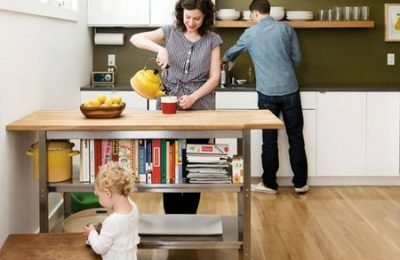Placement Of Furniture In A Living Room – One of the most important things to consider when deciding on placement of furniture in a living room is to decide on a focal point for the room. The first thing to consider is the architectural focal point which would be a window, a fireplace, major door such as French doors or sliding glass doors. You can also create a focal point with a large, major piece of furniture such as an entertainment center. Once you have decided on your focal point, everything else in the room will be placed based on the focal point.
Seating placement
Now the largest piece of furniture will need to be placed opposite your focal point. This can be placed on an angle especially if there are any angles in the walls or ceiling. You do not need to place furniture against the wall unless the living room is very small. Actually, placing the furniture away from walls tends to make the room feel larger. From this point on everything else in the room will need to be placed according to the placement of the first piece of furniture and in line with this first piece.

Usually the largest piece of furniture is a sofa and the next piece may be a love seat or large chair which would need to be placed at right angles with the sofa to form an “L” shape. Other chairs would need to be placed diagonally opposite this grouping but at right angles to the sofa. In this way seating is arranged in convenient conversation areas. If a room is very long, more than conversational area can be created.
Tables, sofa and other furniture
Once the seating is established the end tables and coffee table can be placed accordingly, usually with an end table between the sofa and love seat or chair and another end table between the other chairs in the room. The coffee table should be placed in front of the sofa with enough space to comfortably walk between the sofa and table. Be sure to leave enough space to walk through the room, but not straight through. There should be more of a weaving, zig-zag traffic pattern through the room, but all tables should be within easy reach of the seating furniture so that drinks may be to be placed on them and they can be comfortably reached without having to get up.

Other furniture items such as tables, bookcases, piano, chests should be placed on walls appropriate to the size of the furniture and spaced around the room so they are balanced and not too many heavy pieces are on one side of the room. Area rugs also help to anchor a room and define an activity area such as a conversational area or dining area. In choosing an area rug, be sure to select one large enough to encompass all the furniture, or at least the front feet of the seating arrangement.
Lighting in the living room
The next task is the selection of lighting. Table lamps, floor lamps, hanging lights can be used, but need to be chosen to fit the space and size of the area. If tables and other furniture have been placed correctly, the placement of lamps should be appropriately spaced diagonally throughout the room providing evenly balanced lighting.

Artwork
Once furniture and lighting have been established, artwork and decorative items can be hung on the walls. The most important thing to consider when hanging wall art is the size and shape, and how it relates to the furniture it is hanging over or the wall space. The size and shape should be similar to the furniture it is hanging over. For instance, you would not hang a tall vertical picture over a long horizontal sofa. You could hang two pictures side by side that are related as long as the frames do not go beyond the outside horizontal dimensions of the sofa. The artwork should be tied to the piece of furniture so that it extends the dimensions of the furniture up or to one side.

Groupings of small pictures can be arranged into a gallery as long as the overall shape is similar to the piece of furniture it is related to and does not extend beyond the horizontal dimensions of the furniture. These can be spread out on the floor in order to achieve the best arrangement. If walls have an angle at the ceiling or a staircase angle, wall hangings should follow the same angle. The best place to hang a mirror is on the opposite wall of a window so that it reflects the natural light into the room.

Living room accessories
The last thing you do in decorating a room is to arrange the accessories. These are art objects that you set on tables or shelves. This would include flower arrangements, small pictures, books, candlesticks, glass or pottery objects, etc. When you arrange a group of accessories start with the tallest item first and work down to the smaller items. Keep sets and like items together rather than separating them, and arrange in an asymmetrical grouping rather than a symmetrical one like the same candle stick on each side of a mantel. Use heavier items on heavy pieces of furniture and lighter objects on smaller furniture. Also, when placing items on shelves or in cabinets place heavier items on the lower shelves and lighter items on the higher shelves.









